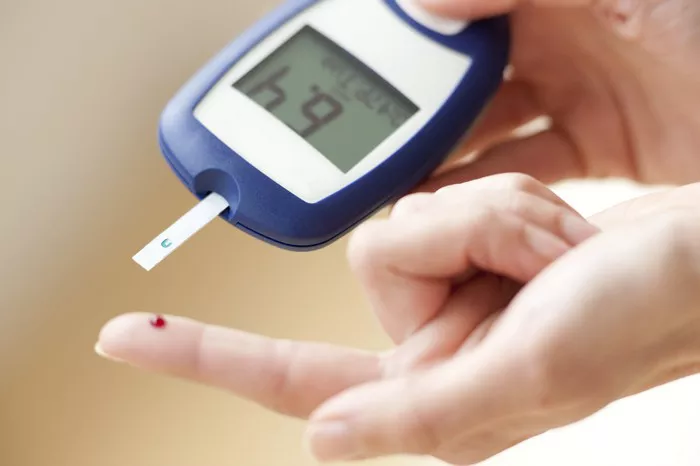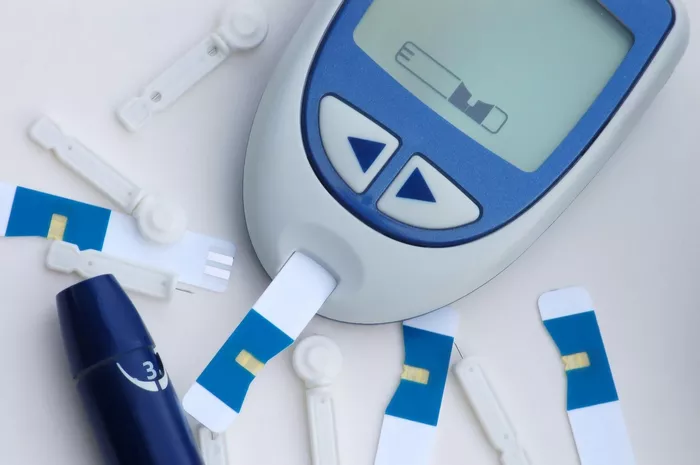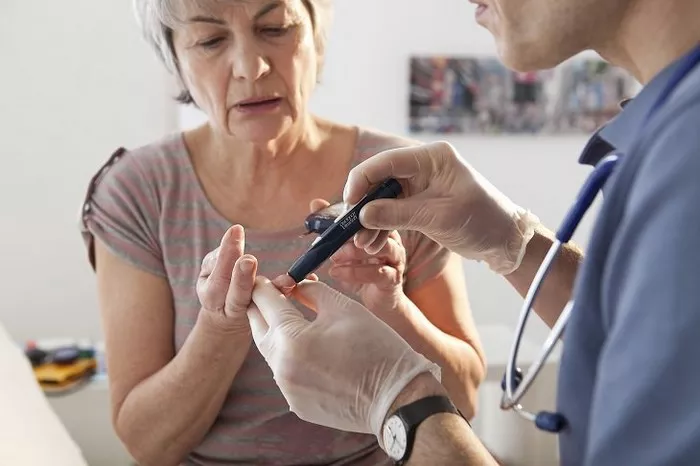Diabetes management has undergone significant advancements in recent years, with technology playing a pivotal role in improving patient outcomes. One of the most notable innovations in this field is the glucose monitor patch, a device designed to provide continuous and real-time monitoring of blood glucose levels. These patches offer a less invasive, more convenient alternative to traditional finger-prick blood glucose testing, providing invaluable data for both patients and healthcare providers.
In this comprehensive article, we will explore the intricacies of glucose monitor patches, including their design, functionality, benefits, and limitations. We will also delve into the science behind these devices, examining how they measure glucose levels and transmit data. Finally, we will discuss the future of glucose monitoring technology and its potential impact on diabetes management.
Understanding Glucose Monitoring
The Importance of Blood Glucose Monitoring
Blood glucose monitoring is crucial for individuals with diabetes, as it helps in maintaining optimal blood sugar levels, preventing complications, and guiding treatment decisions. Regular monitoring allows patients to:
- Adjust their diet and physical activity
- Administer insulin or other medications appropriately
- Recognize and respond to hyperglycemia (high blood sugar) or hypoglycemia (low blood sugar)
Traditional Methods of Blood Glucose Monitoring
Traditionally, blood glucose monitoring has been performed using capillary blood samples obtained through finger-prick testing. This method involves the following steps:
Lancing: A lancet device is used to prick the finger, drawing a small drop of blood.
Sampling: The blood droplet is applied to a test strip inserted into a glucometer.
Measurement: The glucometer analyzes the blood sample and displays the glucose concentration.
While effective, finger-prick testing has several drawbacks, including discomfort, inconvenience, and the inability to provide continuous glucose data.
The Evolution of Continuous Glucose Monitoring
Introduction to Continuous Glucose Monitoring (CGM)
Continuous Glucose Monitoring (CGM) systems represent a significant advancement over traditional blood glucose monitoring methods. Unlike finger-prick tests, CGM devices measure interstitial glucose levels continuously, offering real-time data and trends. This continuous data stream allows for better glucose management and the ability to detect glucose fluctuations that might be missed with periodic testing.
Components of a CGM System
A typical CGM system comprises three main components:
Sensor: A small, wearable device that is inserted just under the skin to measure glucose levels in the interstitial fluid.
Transmitter: Attached to the sensor, it transmits glucose data to a receiver or smartphone.
Receiver/Display Device: This can be a dedicated device or a smartphone app that displays the glucose readings and trends.
Benefits of CGM
CGM systems offer several advantages, including:
- Continuous Data: Provides a comprehensive view of glucose trends and patterns.
- Alerts and Alarms: Warns users of impending hypo- or hyperglycemia, allowing for prompt action.
- Improved Glycemic Control: Helps in achieving better overall glucose management.
- Reduction in Finger Pricks: Minimizes the need for frequent finger-prick testing.
The Glucose Monitor Patch: A Technological Marvel
What is a Glucose Monitor Patch?
A glucose monitor patch is a type of CGM system designed for convenience and ease of use. It is a small, adhesive patch worn on the skin that continuously monitors glucose levels in the interstitial fluid. These patches are typically discreet and comfortable, making them suitable for continuous wear over several days.
Design and Functionality
Components of the Patch
The glucose monitor patch consists of the following key components:
Sensor: A tiny, flexible electrode that is inserted just beneath the skin to measure glucose levels in the interstitial fluid.
Adhesive Patch: Holds the sensor in place on the skin and ensures stable contact.
Transmitter: Embedded within the patch, it sends glucose data to an external receiver or smartphone.
Power Source: A small battery that powers the sensor and transmitter.
How It Works
Insertion: The patch is applied to the skin, and a small, flexible sensor is inserted just under the surface. This process is typically quick and minimally painful.
Measurement: The sensor continuously measures glucose levels in the interstitial fluid, which closely correlates with blood glucose levels.
Data Transmission: The transmitter sends glucose readings to a receiver or smartphone app at regular intervals.
Data Display: The receiver or app displays real-time glucose data, trends, and alerts for hypo- or hyperglycemia.
The Science Behind Glucose Measurement
Interstitial Fluid Glucose Monitoring
The glucose monitor patch measures glucose levels in the interstitial fluid, the fluid surrounding the cells in the tissues. While there is a slight delay between blood glucose and interstitial glucose levels, this delay is typically minimal and does not significantly impact the accuracy of the readings.
Electrochemical Sensing
The sensor in the patch uses electrochemical sensing to measure glucose levels. This involves the following steps:
Glucose Oxidation: Glucose in the interstitial fluid reacts with glucose oxidase, an enzyme on the sensor’s surface, producing hydrogen peroxide.
Electrochemical Reaction: The hydrogen peroxide undergoes an electrochemical reaction at the sensor’s electrode, generating an electrical current proportional to the glucose concentration.
Signal Processing: The electrical current is processed and converted into a glucose concentration reading, which is then transmitted to the receiver or app.
Data Transmission and Display
Wireless Communication
The glucose monitor patch utilizes wireless communication technologies, such as Bluetooth or Near Field Communication (NFC), to transmit glucose data to the receiver or smartphone. This enables real-time data transfer and immediate access to glucose readings.
Mobile Apps and Integration
Most glucose monitor patches are paired with mobile apps that provide a user-friendly interface for viewing glucose data. These apps offer various features, including:
Real-Time Readings: Display current glucose levels and trends.
Alerts and Notifications: Warn users of hypo- or hyperglycemic events.
Data Logging: Store historical glucose data for analysis and sharing with healthcare providers.
Integration with Other Health Data: Sync with other health and fitness apps to provide a comprehensive view of the user’s health.
Benefits of Glucose Monitor Patches
Improved Diabetes Management
Glucose monitor patches offer several benefits that contribute to better diabetes management:
Continuous Monitoring: Provides a complete picture of glucose trends, helping users make informed decisions about diet, exercise, and medication.
Timely Alerts: Early warning of impending glucose excursions allows for prompt intervention.
Reduced Burden: Minimizes the need for frequent finger-prick testing, reducing discomfort and inconvenience.
Enhanced Quality of Life
For many individuals with diabetes, glucose monitor patches significantly improve their quality of life:
Discreet and Comfortable: The patches are small, lightweight, and unobtrusive, allowing for continuous wear without impacting daily activities.
Greater Freedom: Continuous monitoring enables users to engage in various activities with confidence, knowing they will be alerted to any significant glucose changes.
Empowerment: Real-time data and trends empower users to take a proactive approach to managing their diabetes.
Clinical Benefits
From a clinical perspective, glucose monitor patches offer several advantages:
Better Glycemic Control: Continuous data allows for more precise adjustments to therapy, leading to improved glycemic control.
Reduced Complications: Improved glucose management can reduce the risk of diabetes-related complications, such as neuropathy, retinopathy, and cardiovascular disease.
Informed Decision-Making: Healthcare providers can access comprehensive glucose data, enabling more informed treatment decisions and personalized care plans.
Challenges and Limitations
Accuracy and Calibration
While glucose monitor patches offer numerous benefits, they are not without limitations:
Accuracy: Although generally reliable, CGM systems can sometimes exhibit inaccuracies, particularly during rapid glucose changes. Calibration with finger-prick tests may be necessary to ensure accuracy.
Lag Time: There is a slight delay between blood glucose and interstitial glucose readings, which can impact the timeliness of alerts.
Cost and Accessibility
The cost of glucose monitor patches and CGM systems can be a barrier for some individuals:
Expense: The initial cost of the device, as well as ongoing expenses for sensors and supplies, can be significant.
Insurance Coverage: Coverage for CGM systems varies by insurance plan and region, potentially limiting accessibility for some patients.
Skin Reactions and Discomfort
Some users may experience skin reactions or discomfort from wearing the patch:
Skin Irritation: Prolonged wear of the adhesive patch can cause skin irritation or allergic reactions in some individuals.
Insertion Discomfort: While insertion is generally minimally painful, some users may find it uncomfortable.
The Future of Glucose Monitoring Technology
Advances in Sensor Technology
Future developments in sensor technology are expected to enhance the accuracy, reliability, and convenience of glucose monitor patches:
Improved Accuracy: Advances in sensor design and materials will likely reduce inaccuracies and the need for calibration.
Extended Wear: Next-generation sensors may offer longer wear times, reducing the frequency of sensor replacements.
Integration with Insulin Delivery Systems
The integration of CGM systems with insulin delivery systems, such as insulin pumps and closed-loop systems, represents a significant advancement in diabetes management:
Artificial Pancreas: Closed-loop systems, also known as artificial pancreas systems, combine CGM with automated insulin delivery, providing real-time adjustments to insulin dosing based on glucose readings.
Enhanced Control: These integrated systems can significantly improve glycemic control and reduce the risk of hypo- or hyperglycemia.
Non-Invasive Monitoring
Research is ongoing into non-invasive glucose monitoring technologies that eliminate the need for sensor insertion:
Optical Sensors: Devices that use optical methods, such as spectroscopy, to measure glucose levels through the skin or other tissues.
Wearable Technology: Development of wearable devices, such as smartwatches, that incorporate non-invasive glucose monitoring.
Data Analytics and Artificial Intelligence
The integration of data analytics and artificial intelligence (AI) into glucose monitoring holds promise for further improving diabetes management:
Predictive Analytics: AI algorithms can analyze glucose data to predict trends and potential glucose excursions, providing proactive alerts and recommendations.
Personalized Insights: Data analytics can offer personalized insights and recommendations based on individual glucose patterns and behaviors.
Conclusion
Glucose monitor patches represent a remarkable advancement in diabetes management, offering continuous and real-time monitoring of glucose levels with minimal discomfort and inconvenience. These devices provide invaluable data for both patients and healthcare providers, enabling better glycemic control and improved quality of life.
As technology continues to evolve, future developments in sensor technology, integration with insulin delivery systems, non-invasive monitoring, and data analytics are expected to further enhance the capabilities of glucose monitoring devices. These advancements hold the potential to revolutionize diabetes management, making it more effective, convenient, and personalized than ever before.
In summary, the glucose monitor patch is a technological marvel that exemplifies the power of innovation in healthcare. By providing continuous, real-time glucose data, these devices empower individuals with diabetes to take control of their condition and live healthier, more fulfilling lives.
Related topics:
Normal A1C Levels in Diabetes Management

























